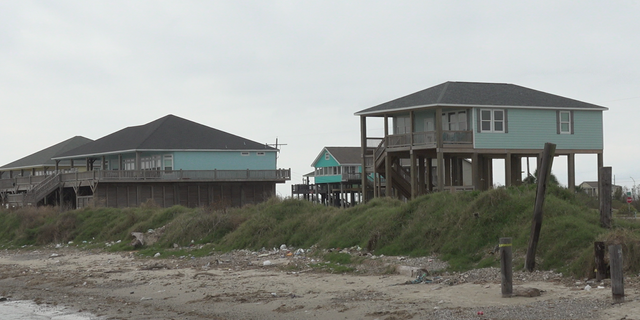
After turning northwestward and weakening further, Andrew moved ashore near Morgan City, Louisiana, as a low-end Category 3 storm. Several hours later, the hurricane emerged over the Gulf of Mexico at Category 4 strength, with the Gulf Coast of the United States in its dangerous path. With a barometric pressure of 922 hPa (27.23 inHg) at the time of landfall in Florida, Andrew is the sixth most-intense hurricane to strike the United States. Though Andrew briefly weakened to Category 4 status while traversing the Bahamas, it regained Category 5 intensity before making landfall in Florida on Elliott Key and then Homestead on August 24. After spending a week without significantly strengthening itself in the central Atlantic, the storm rapidly intensified into a powerful Category 5 hurricane while moving westward towards the Bahamas on August 23.

In total, Andrew destroyed more than 63,500 houses, damaged more than 124,000 others, caused $27.3 billion in damage (equivalent to $57 billion in 2022), and left 65 people dead.Īndrew began as a tropical depression over the eastern Atlantic Ocean on August 16. Passing directly through the cities of Cutler Bay and Homestead in Dade County (now known as Miami-Dade County), the hurricane stripped many homes of all but their concrete foundations and caused catastrophic damage. While the storm also caused major damage in the Bahamas and Louisiana, the greatest impact was felt in South Florida, where the storm made landfall as a Category 5 hurricane, with 1-minute sustained wind speeds as high as 165 mph (266 km/h) and a gust as high as 174 mph (280 km/h). In addition, Andrew is one of only four tropical cyclones to make landfall in the continental United States as a Category 5, alongside the 1935 Labor Day hurricane, 1969's Camille, and 2018's Michael. Andrew was also the strongest landfalling hurricane in the United States in decades and the costliest hurricane to strike anywhere in the country, until it was surpassed by Katrina in 2005. It is the most destructive hurricane to ever hit Florida in terms of structures damaged or destroyed, and remained the costliest in financial terms until Hurricane Irma surpassed it 25 years later. Hurricane Andrew was a very powerful and destructive Category 5 Atlantic hurricane that struck the Bahamas, Florida, and Louisiana in August 1992. Part of the 1992 Atlantic hurricane season

The Bahamas, Florida, Louisiana, Southeastern United States, Mid-Atlantic states

Hurricane Andrew at peak intensity near the Bahamas on August 23


 0 kommentar(er)
0 kommentar(er)
